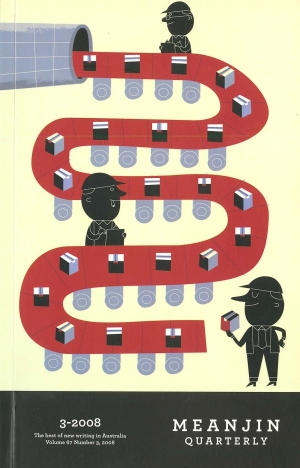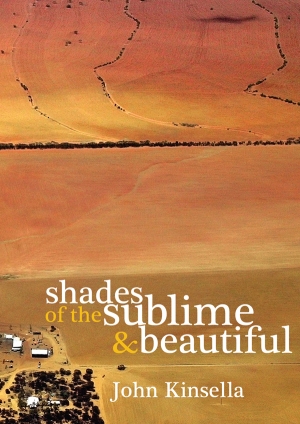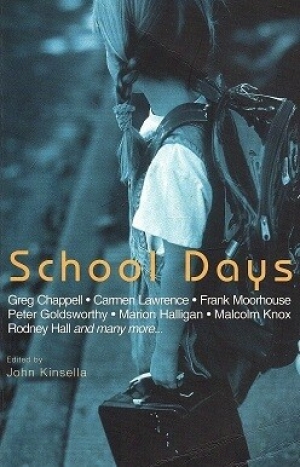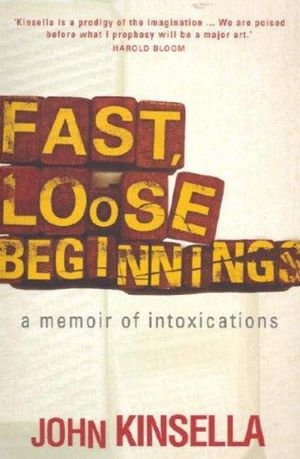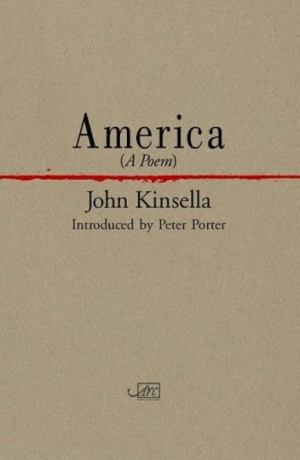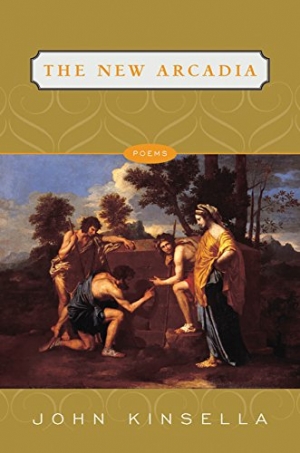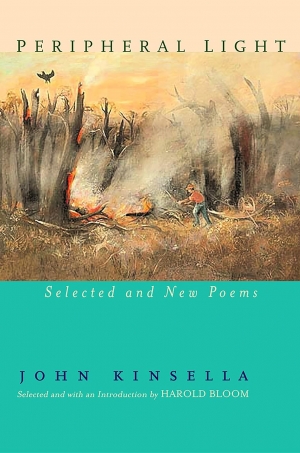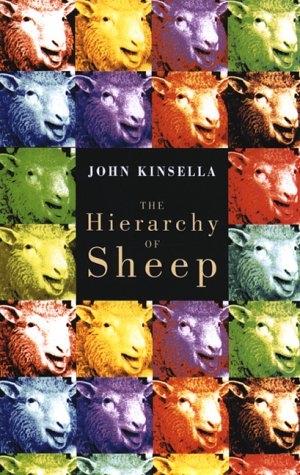John Kinsella
Maria Takolander reviews ‘Meanjin Vol. 67 No. 3’ edited by Sophie Cunningham
The new Meanjin, edited by Sophie Cunningham, is exciting to behold. With its varied font, though, it runs the risk of being like Federation Square: striking to look at but difficult to negotiate. The small, faint font made this issue taxing to read. Perhaps younger readers, targeted by some of the content (such as the serialisation of a graphic history), will have less difficulty.
... (read more)Nicholas Birns reviews 'Shades of the Sublime and the Beautiful' by John Kinsella
Another poet might invoke Edmund Burke’s famous treatise on the Sublime and the Beautiful as a piece of phraseology or a pleasing adornment, but with John Kinsella, such a title is dead serious. Elliot Perlman’s superb novel Seven Types of Ambiguity (2003) ingeniously makes the reader think of William Empson’s, and the idea of plural signification it evokes, but not instantly to reread it. Kinsella’s use of Burke’s title prompts one to reread the original – ideally, in a Kinsellan métier, on the internet, late at night. Additionally, the ‘shades’ in Kinsella’s title is an important supplement – shades as variations, colourings, but also shadows, undertones.
... (read more)Hands up those who know where Upper Ulam is. In what Melbourne convent school was Veronica Brady’s spiritual and aesthetic education nourished? Can anyone name Eva Sallis’s latest work of fiction or identify the school, somewhere outside Adelaide, where Sallis practised the violin and took her turn at milking the cow?
... (read more)David McCooey reviews 'Fast, Loose Beginnings: A memoir of intoxications' by John Kinsella
John Kinsella’s new memoir, Fast, Loose Beginnings, may have been published by the august publishing house of Melbourne University Publishing, but it is nevertheless a garage-band of a book. It is, as its title signals, both fast and loose. Its rhythms aren’t always graceful, and its timbres aren’t always smooth. You can almost hear the hum of the amplifiers. The poet Jaya Savige, in his review of the book for the Sydney Morning Herald, commented on the book’s lack of polish.
... (read more)Anthony Lynch reviews ‘America Or Glow: A poem’ by John Kinsella
Peter Porter, in his introduction to John Kinsella’s new collection, notes that ‘we are all familiar with the surface details of American life. Kinsella does not have to footnote his poem: we recognise his instances immediately … We all speak American.’ Given that Kinsella now lives and works in the United States, Porter also identifies ‘the disillusion at seeing a great exemplar close up’ as one likely catalyst behind the poetic polemic that constitutes this book. Yet it is the surface, the broad impressionistic sweep that we in Australia have absorbed over decades of exposure to American life in our newspapers, magazines, television programmes and popular music, with which Kinsella often engages. One senses that the poet, whether up close or at a distance, would find much about the United States with which to take issue. Nevertheless, his engagement with, and rupturing of, surface in this long poem, or sequence of poems, seems apt. Kinsella smatters the text with allusions to film (ranging from the Marx brothers to Carrie), popular music (George Gershwin to Jefferson Airplane) and numerous other trappings of American life. In doing so, he takes popular culture’s immersion in artifice and turns it against itself.
... (read more)'Parrotology: On the necessity of parrots in poetry' by John Kinsella
A couple of months ago, driving with my daughter just outside the wheat-belt town of York, Western Australia, we came across a ‘28’ parrot that had just been struck by a car. I scooped it up in a cloth, and my daughter held it on the back seat until we could get home. Having been bitten numerous times by those ‘strong and hooked’ beaks, I warned her to be wary. But the parrot – a splay of emerald, turquoise, black and yellow feathers – was too dazed to bite, and clearly had a broken wing. Though we’ve always called these beautiful birds 28s, technically they are a ring-necked parrot, and possibly even the Port Lincoln variety of ring-necked. The demarcation lines between varieties are hazy. The local ‘nickname’ matters as local names do. We eventually handed the injured bird over to the local ‘bird lady’, who later let me know that it had died due to massive brain damage. My daughter doesn’t know it died. She said it was the closest she’d ever come to something so ‘amazing’. I left it at that.
... (read more)In the opening poem of Virgil’s Eclogues, a shepherd newly dispossessed of his farm by a soldier returning from war exclaims: ‘There’s so much trouble everywhere these days. / I was trying to drive my goats along the path / And one of them I could hardly get to follow; Just now, among the hazels, she went into labor …’ (trans. David Ferry). More than 600 years later, Poussin’s painting, Les Bergers d’Arcadie, dit aussi Et in Arcadia Ego (1638–40), takes up the theme of dispossession in a more radical key: even shepherds in Arcadia must die. The pastoral mode (taken broadly to include anti- and post-pastoral) has always enveloped threats to the pastoral idyll. John Kinsella’s The New Arcadia – with Poussin’s painting on its cover – is the final instalment of an ‘anti-pastoral’ trilogy initiated by The Silo: A Pastoral Symphony (1995) and followed by The Hunt (1998). In The New Arcadia, as in its prequels, we find the pastoral mode in full-blown crisis: in modern Australia, nature’s small misfires (viz. the goat’s ill-timed birth) have escalated into ecological disaster. In The Hunt, the farmers and their families are killed by their own tools, dying in accidents, falling under tractors, shooting themselves; in The New Arcadia, on the other hand, most of the victims are native birds.
... (read more)Born in Perth, I came as a boy to think of myself as a Yorkist: my summer holidays were often spent in that glittering town, and the first sound I can remember is the intransigent call of crows over the road there from the city. For entirely good reasons, the place is almost a myth to me.
In deeper and more complex ways, that territory is mythic to John Kinsella. His Peripheral Light would look very different, and much the poorer, if it were possible to subtract the mythic dimension from this book. Reading his ‘Wheatbelt Gothic or Discovering a Wyeth’, I am reminded of an essay of Guy Davenport’s in The Geography of the Imagination, in which he details how indebted Grant Wood’s ‘American Gothic’ is to mythological motifs, and how thoroughly Wood has subsumed them. Kinsella, at his best, seems to me equally adept at living with imaginative indebtedness and at parlaying it into an asset.
... (read more)What is the comparative of prolific? John Kinsella, in this latest extension of his ‘counter-pastoral’ project, manages a tricky balancing act between the extreme givens of the bush and the fashions of art gallery and English Department. A belligerent posturing is implicit in Kinsella’s term, while there is only so far a poet can be anti-Georgics or extra-Georgics or post-Georgics before the game becomes exhausted or obvious. Nevertheless, ‘counter-pastoral’ is an extended essay that takes the pastoral concerns and illusoriness of ancient and eighteenth-century Europe and tests them against our own realities: environmental degradation, both random and systematic destruction of nature by humans, and a seeming indifference on the part of many Australians to doing anything about them.
... (read more)John Kinsella, who has made a name for himself in Australia and abroad as poet and critic/commentator, has published an extended prose sequence which his publishers describe as a novel, called Genre. It’s dedicated to Derrida, as well as Kinsella’s partner, Tracy Ryan; and it begins with quotes from Defoe (on the plague) and Dennis Hopper (on drugs). Genre reads like a kind of journal/essay with meditations on ideas of seeing, on poetry, and addiction, intercut with several narratives. ‘In the Theatre of the Imagination, all but one of the eight stages are occupied ... The Renaissance Man is writing an essay on an exhibition and thinking about his latest books on aesthetics.’ The narrator’s essay is called ‘A Public Viewing of Private Spaces’.
... (read more)
